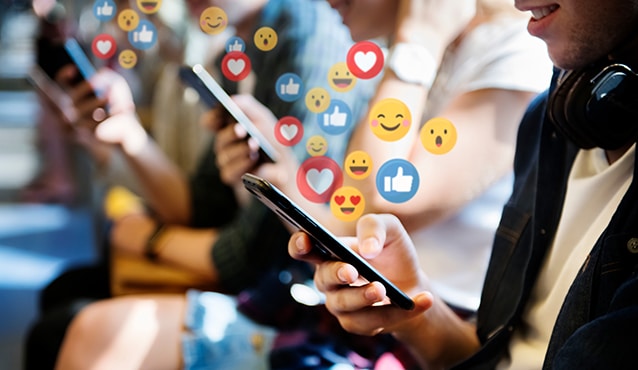Social media has permeated every aspect of our lives; exponentially so since 2020. From health to fashion, technology and more, we have access to everything we want at the click of a button. No wonder then, having a digital media strategy is indispensable for brands to stand out today.
A noteworthy aspect of that strategy now is collaborating with influencers. Influencers, essentially, are people who have a substantial following online. Since they aren’t quintessential celebrities, they are more relatable, and consumers find it easier to trust them and the brands they promote.
According to a report by Nielsen, 83% of consumers trust recommendations from their peers.
Micro vs Macro Influencers:
There are four main types of digital influencers—namely hero, macro, micro and nano. Macro influencers are those who have greater than 10,000 followers. While they are more popular than micro and nano influencers, they are not necessarily more engaging as they have many passive followers.
Micro-influencers have between 1,000 and 10,000 followers. They cater to a niche audience.
Reasons why your brand needs a micro-influencers strategy:
- Gain quality engagement: In the past year, brands understood that the quantity of followers that an influencer has is not the right indication of how engaged their followers are. In 2017, Daniel Wellington launched a social media campaign with Kendall Jenner. Though she had more than 90 million followers, people did not engage with the post. So, the brand got micro-influencers on board to promote its watch. And no surprises there; they witnessed an exponential growth in their engagement in no time. People related better to micro-influencers and were convinced that a Daniel Wellington watch was not out of reach anymore. With micro-influencers, your brand can reach out to its ideal demographic and audience more effectively.
- Cost-effective: If your brand does not have a large budget for its digital marketing and influencers, micro-influencers are your best bet. Since their following is not too large, they are budget-friendly and might even agree to work in exchange for your products or services.
- Attract genuine consumers: A Forbes survey revealed that 43% millennials value authenticity over content. When it comes to brand influencers, since micro-influencers have a small but specialised audience, consumers are more genuinely interested in what the influencer promotes. Thus, attracting legitimate buyers to your brand.
Some proven cases where having a micro-influencers strategy proved successful for brands:
- The Lays’ ‘#SmileDekeDekho’ campaign garnered a lot of traction online. And it wasn’t because of the star campaigners alone. The influencer strategy involved 2,500 micro-influencers, who contributed to the engagement of 10 million consumers.
- The online audiobook and podcast service Audible launched a digital campaign with many big and small influencers. Yet, it was their collaboration with micro-influencer Jesse Driftwood that yielded surprising results. Thanks to his loyal followers, the brand was able to engage many new consumers!
So, how do you plan a digital media strategy that works with micro-influencers?
1: Research and find the right kind of influencer
Firstly, understand the difference between macro vs micro-influencers to decide which one you want to get on board. Then, look for an influencer whose content resonates with your brand’s values and product or service. Using keywords on Instagram, Facebook and YouTube, you will be able to shortlist influencers that fit your requirements—be it the demographic, tone or type of content.
2: Set a budget
Thankfully, when it comes to micro-influencers, you can work on a tight budget. Reach out to your shortlisted influencers and make your costs and requirements clear. You can offer them sample products or services in exchange.
3: Encourage influencer-generated content
At the outset, you can generate the content yourself and ask the influencer to post it. However, for authentic engagement, encourage influencer-generated content. The followers already like the content they (micro-influencers) create, so the collaboration will be genuine and trustworthy.
4: Decide on a brand message and the tone of content
While the micro-influencer will curate the final content, make sure you inform them of your guidelines and what you expect of them. Avoid any confusion or misunderstanding lest you end up with a campaign post that impacts your brand negatively or not at all.
5: Review, refine and track your influencer strategy
There are not many tools available online to help you track an influencer campaign. Add to that the fact that Instagram has disabled the number of likes feature, making it all the more tricky to understand how the campaign performed. Still, keeping in mind your KPIs and using the Google Analytics tool, you can understand how your micro-influencers strategy went.
Having an influencer strategy is vital to succeeding in this social media era. Given that, at Pulp Strategy, we can help you navigate digital marketing and influencers to set your brand up for success. So, don’t wait; create your micro-influencers strategy right away with our easy steps!
Click here to get in touch with our experts today.





